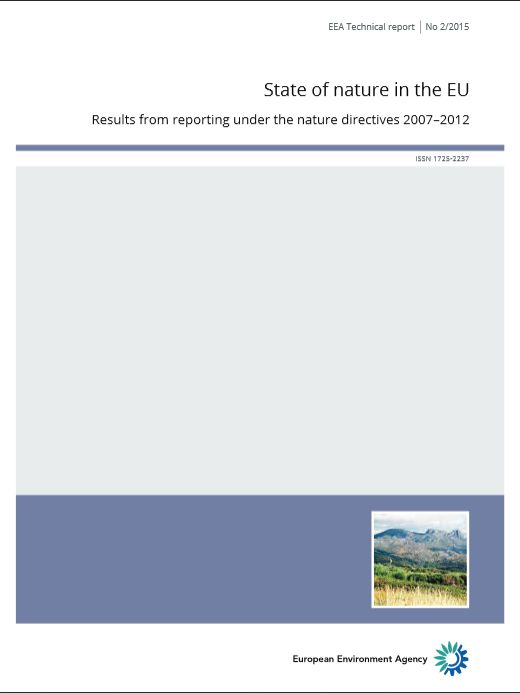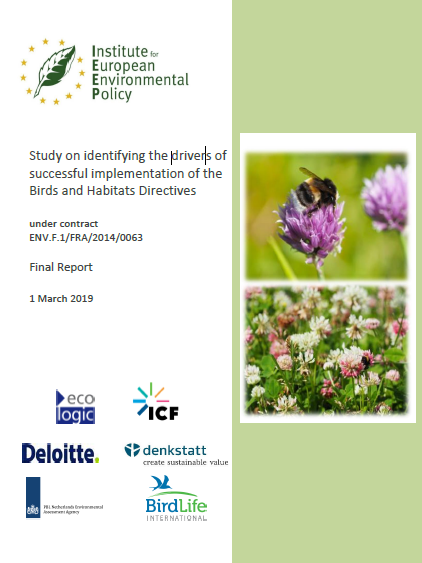Out now: Handbooks to improve the Birds and Habitats Directives Implementation
- News
- Date
-
- Location
- Berlin, Germany
In March 2021, two new handbooks on Evidence‐based Improvements in the Birds and Habitats Directives Implementation (E-BIND) are being released. They have been the achievements of a systematic review of the Birds and Habitats Directives Implementation. The core objective of the E-Bind handbook(s) are to advise the Commission, Member State authorities, decision makers, spatial planners, conservationists and NGOs in more effective implementation of the Nature Directives. With its hands-on guidance for improving access to data and information while fostering scientific support and an easy utilization and navigation structure the handbook(s) will contribute to the mobilization of the scientific community in order to close knowledge gaps, to offer solutions to strategic problems and to enhance the accessibility of scientific information to policy makers and all players involved in the implementation of EU Birds and Habitats Directive. Ecologic Institute's Dr. Grit Martinez and Beáta Welk Vargová led the development of the handbooks.
The Birds Directive established an EU-wide protection regime in 1979 for all bird species naturally occurring in the EU, including a classification by Member States of Special Protection Areas (SPA) for threatened and migratory birds. 102This approach was extended through the Habitats Directive in 1992. The Habitats Directive also provided for the establishment of a representative system of legally protected areas throughout the EU, known as Special Areas of Conservation (SAC). Together, SPAs and SACs form the Natura 2000 network, which was established under the European Union (EU) Birds and Habitats Directives. Natura 2000 is one of the largest international networks of protected areas.
Between 2014 and 2016, the European Commission carried out a Fitness Check of both Directives, which showed that the introduction of the Nature Directives stimulated a major increase in research and monitoring activities. However, it also recognized that the existence of remaining knowledge gaps might have led to inefficiencies. To date and with the spatial designation of sites by the EU member states almost finalized, the biggest challenge still lying ahead is the appropriate management of the sites. Moreover, processes of decision-making, roles and power relations in Natura 2000 sites vary across countries and regions. Hence, a strategy is needed to approach, engage and commit decision-making bodies accordingly to their context and diversity of users.
Here started the mission of the two E-BIND handbook(s). The author’s payed especial attention to the challenge which authorities, sites managers, spatial planners, NGO’S and others have to find and access adequate and reliable data. Accordingly, the handbook(s) does focus on guidance for improving the availability of data and information on species, habitats and sites (Focus area A) and scientific support for successful implementation of the Natura 2000 network (Focus area B).
Focus Area A, availability of data and information on habitats and species and sites (this handbook) seeks to provide in the lack of data and access to data, including remotely sensed information and monitoring data and consists of three sections: I. Monitoring of species and habitats; II. Contribution of Remote Sensing Techniques for monitoring Natura 2000 sites; and III. Access to data and information.
Focus Area B focuses on the effectiveness of the Natura 2000 network and conservation successes, and therefore looks at habitat management and restoration, as well as the wider landscape with Green Infrastructure and Ecosystem services. Handbook B also consists of three sections. I. Guidance and tools for effective restoration measures for species and habitats; II. Green infrastructure and network coherence; and III. Co-benefits (ecosystem services).
Layout technically speaking, the main goal is to offer handbook(s) which are easy to use and to navigate. As the handbooks are to be used mostly "on-screen", not primarily for print, they are interactive and interlinked, with many internal cross-references as well as external links leading to external resources. Based on the EC Visual Identity Style Guide the handbook(s) use not only landscape formats, which work well on screens but also common A4 size format to print well when necessary. Sites of a chapter use same coloured codes for easier orientation and navigation. Vertically divided sites are broken down in two parts presenting main information and additional information. While the main part, on the left side, presents the main flowing and structured text, as well as figures and tables, a colored right hand column then brings up additional information, in the form of explanatory boxes, figure and table captions. To break the long blocks of text, and to illustrate contents, the handbook is full of figures and tables as well as photography.
With its hands-on guidance for improving access to data and information while fostering scientific support and its easy and attractive to usage the handbook(s) will contribute to the mobilization of the scientific community in order to close knowledge gaps, to offer solutions to strategic problems and to enhance the accessibility of scientific information to policy makers and all players involved in the implementation of EU Birds and Habitats Directive.





